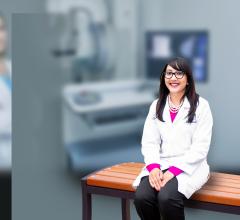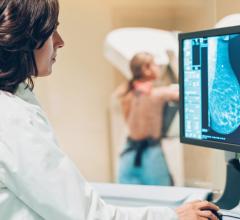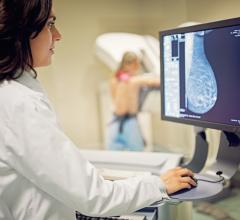December 15, 2008 - Breast conserving surgery is not improved by the addition of MRI to other conventional staging assessments, according to a study presented at the San Antonio Breast Cancer Symposium.
Women randomized to receive MRI as part of loco-regional staging before wide local excision were no more likely to avoid mastectomy and or reoperation than those who had the conventional mammogram, ultrasound, and biopsy for staging (P=0.7691), Phil Drew, M.D., of Hull York Medical School in Hull, England.
These findings from the first prospective randomized trial of MRI in this setting confirm the lack of benefit seen in prior retrospective studies, commented Monica Morrow, M.D., of Memorial Sloan-Kettering Cancer Center in New York.
Dr. Morrow recommended a minimal role for MRI in the newly diagnosed patient. As a result, the British National Health Service had Dr. Drew's group assess the new imaging technique in the multicenter, open-label COMICE trial.
The study included 1,623 women with biopsy-proven primary breast cancer who were scheduled for wide local excision based on triple assessment with mammogram, ultrasound, and biopsy. Participants were randomized to additional MR imaging.
At all stages the patients and physicians were informed of the MRI findings, which may have biased the trial results, Dr. Drew said. Although the median size of the index lesion was identical across groups, MR-imaged patients tended to have larger excisions (70.55 versus 63.69 g, P=NS).
For the primary endpoints, the MRI-assessed patients were more likely to go on to have mastectomy instead of the previously planned wide local excision (7.1 percent versus 1.2 percent) with no difference in reoperation rates (18.75 percent versus 19.33 percent, odds ratio 0.96, P=0.7691).
The only significant predictors of reoperation were younger age and lobular cancer, not MRI. MRI had a relatively low effectiveness, and the positive predictive value was 61.8 percent, while the negative predictive value was 83.7 percent.
MRI changed management for 6.1 percent of patients, but 28 percent of multifocal disease was not confirmed pathologically. MRI also correctly detected additional cancerous lesions in 4.8 percent of patients, which was not significant.
Source: San Antonio Breast Cancer Symposium
Source reference: Drew PJ, et al "The UK NIHR multicentre randomised COMICE trial of MRI planning for breast conserving treatment for breast cancer" SABCS 2008; Abstract 51.
For more information: www.sabcs.org


 July 24, 2024
July 24, 2024 








